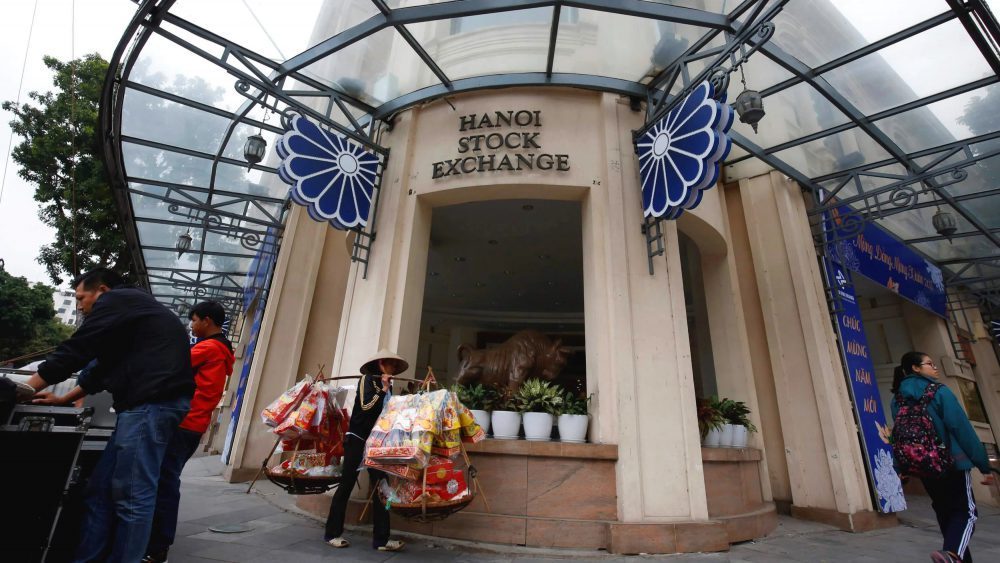Vietnam has managed to repeat its success of containing a virus outbreak again, and that’s helped drive the nation’s stock market to become Asia’s top performer this month.

The benchmark stock index has rallied 13% in May, driven mainly by local investors as foreign funds pull money out from risk assets. The local currency has rebounded more than 1% after sliding to a record low in March during the global selloff.
“We are invested and continue to look for good stock specific stories,” said Joshua Crabb, a portfolio manager at Robeco in Hong Kong, as Vietnam offers a promising medium-term outlook.
Vietnam resorted to a quick rollout of tough measures to stem the virus, including aggressive contact tracing and quarantining more than 100,000 people, which won it praise from experts abroad. The International Monetary Fund forecast Vietnam’s economic growth to be among fastest in Asia this year, with the nation seen avoiding a recession that is set to sweep many of its Asian neighbors.
Back in 2003, Vietnam also won plaudits for its swift handling of the Severe Acute Respiratory Syndrome outbreak. It was the first country to be removed from the World Health Organization’s list of nations with local transmissions.

Hanoi stock exchange © Reuters
Here’s an introduction to Vietnam’s stock, currency and bond markets:
Equities
Vietnam’s stocks have been on the watch list for a possible upgrade to secondary emerging market from frontier by FTSE Russell since 2018. The nation is also seeking an emerging-market status from index provider MSCI Inc.
- There are two official stock exchanges: Ho Chi Minh City Stock Exchange, which houses most of the mid- to large-cap companies, and the Hanoi Stock Exchange, home to small caps, bonds and derivatives trading. There’s also a regulated over-the-counter market called the Unlisted Public Company Market, also known as UpCom
- HOSE is open Monday to Friday, from 9:15 a.m. to 3 p.m. local time, with a lunch break from 11:30 a.m. to 1 p.m. Gains and losses are limited to 7% for individual stocks. Companies listed here also make up the benchmark VN Index
- Curbs on foreign ownership for some industries were eased in 2015. Most companies are allowed to decide on their foreign ownership limits, though only a small number have elected to entirely remove the restrictions
- The lack of liquidity is among the biggest challenges for foreign investors. To overcome this, the market regulator has sought to boost share sales and has introduced products such as derivatives in 2017 and covered warrants last year. The government also plans to establish the Vietnam Stock Exchange as parent company of the two bourses
- Vietnam has one of the smallest equity markets in Asia. Total market capitalization stands at about $170 billion, less than half that of Singapore and Indonesia
FX
The Vietnamese dong has held steady against the dollar this month, after climbing 1.4% in April, which was the biggest monthly advance since 2008.
- The State Bank of Vietnam releases a daily fixing versus the dollar at about 7:30 a.m. to 8 a.m. local time, and the dong is allowed to trade within 3% on either side
- The currency is officially pegged to fluctuations of the average interbank exchange rate and a basket of eight major peers including the dollar, euro, yuan and yen, as well as macroeconomic conditions. It is used by the central bank as a tool for price stability
- The IMF has encouraged limiting interventions to maintain orderly market conditions and greater exchange rate flexibility
- Commercial banks can trade the currency with the central bank based on the daily reference rate, from 8 a.m. to 4 p.m. local time during weekdays
- Vietnam is on the U.S. Treasury’s watch list for currency manipulation and the central bank and government ministries have pledged to address U.S. concerns
Bonds
At just $58 billion in size, Vietnam’s local bond market is the smallest among economies tracked by the Asian Development Bank. Authorities aim to boost the size of the sovereign debt market to 45% of gross domestic product by 2030, from 20% last year. Corporate bonds are targeted to grow to 20% of GDP in a decade from 11%.
- Government and central bank bonds dominate the debt market, accounting for about 90% of the total as of March, with corporate notes making up the rest, according to the ADB
- The sovereign debt market is regulated by the Hanoi Stock Exchange, and bonds are issued by the Finance Ministry through the State Treasury via both auction and underwriting. The debt has maturities of up to 30 years, compared with a maximum of 10 years in 2009
Foreigners own less than 1% of local notes as of March, according to the ADB. Officials expect government bonds to be included in international indexes by 2021
Source: Vietnaminsider.vn
Follow us on social media channels:
👉 Telegram Community: t.me/LiveTrade_info
👉 Telegram Official Channel: t.me/LiveTrade_io
👉 Facebook: bit.ly/LiveTrade_facebook
👉 Twitter: bit.ly/LiveTrade_twitter
👉 YouTube: bit.ly/LiveTrade_youtube




